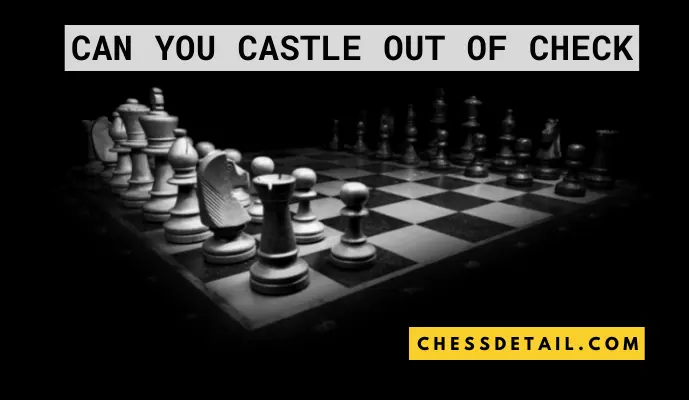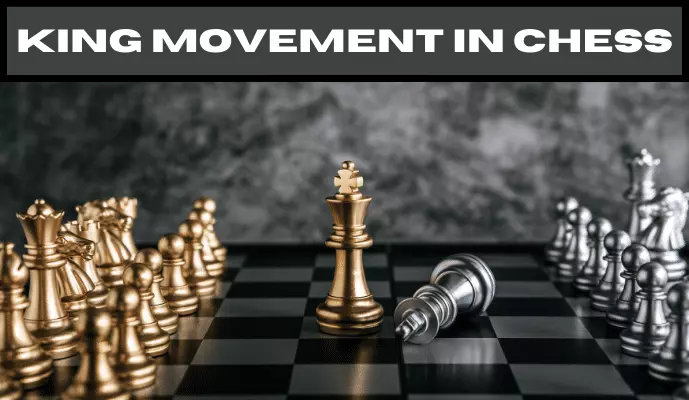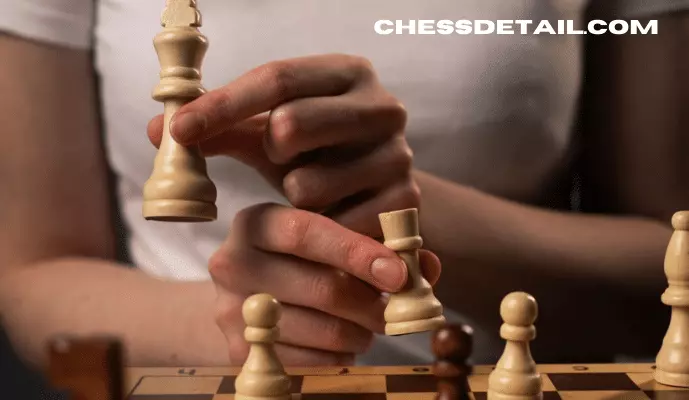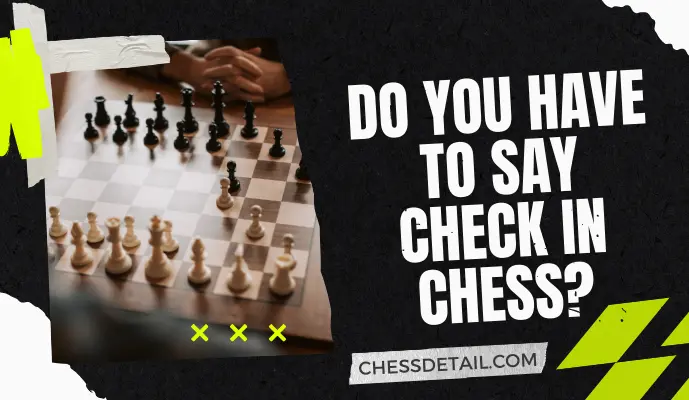Can you Castle Out of Check in Chess? Explained
Can you castle out of check or after you have been in check? Is it possible to castle through a check? Or Is it possible to castle after the check? Castling allows you to escape check? The list goes on. Here is where I am going to clear all your doubts if you are also wondering about these questions.

Can you Castle Out of Check :
“As it is not part of the rules, you cannot castle out of check. Doing so is illegal. If the check is removed or blocked, you can escape the king by moving your piece to an area that is less endangered.”
Is it possible to leave your castle unchecked? The move would be considered illegal if you castled out of check. When the king is in check, castling cannot be performed. In any case, castling is permitted after the king escapes the check as long as the rules of castling are followed.
Below, I will go over all the important castling rules in chess as well as the castling rules under check. To begin with, let me explain what casting is and how to castle if you are a complete beginner. You will be able to understand castling concepts more easily after watching this video.
What Is Castling in Chess?
Castling involves your king moving two spaces to the right or left while your rook moves to the side opposite the king. Castling is defined as follows by FIDE, the international organization that oversees chess rules:
The king and either rook of the same color are moved along the player’s first rank in a single movement, counting as one move of the king. A rook on its original square is moved two squares towards the king on its original square, and the king is then moved to the rook’s new square.
How Do You, Castle?
Using the following example, you can learn how to perform the castle move. The white king and rook on h1 should be your only focus, disregarding the rest of the pieces.
As a result of this scenario, neither the rook nor the king has moved, fulfilling the first requirement. In addition, neither the king nor the rook is blocked by any pieces. The king will not cross a square that’s being attacked during the move because he is not in check. In this case, white may castle.
- In the first move, the king moves two spaces towards the rook, ending on g1.
- Once the rook on h1 has hopped over the king, it will hop over to f1. Castling is a great way to get your king back to where he started. Whenever the king starts on a color square, he will finish on that same color square. As another example, the white king always castles on a black square while the black king always castles on a white square.
- Kingside castling refers to kings casting toward rooks on their sides. It would have been queenside casting if you had castled toward the other rook. The kingside castling is indicated by O-O (or 0-0), while O indicates the queenside castling-O-O (or 0-0-0), indicating how many squares the rook jumps.
Rules Of Castling
It can be very confusing for beginners to understand all the rules and regulations that relate to casting. That makes sense to me! The rules are not difficult to understand if you read them carefully.
In order to keep the castle under check, there are a few important rules to follow: There are several reasons why castling isn’t allowed in chess, according to FIDE:
- When the king is in check
- A square being attacked, or one being occupied by the king, will be used by the king to pass.
- In the event that both the king and the rook have already moved
- A piece separates the king and the rook.
Also known as chess’s castling rules, these four rules govern the game.
Example To Explain Castling Under Check
Castling under check is demonstrated in the following example. So we can clarify all doubts, let’s look at this case by case. To make it easier to identify the causes, all their numbers have been marked in the image.

Castling Through Check
It is evident from the image that the white king will move to g1 square if he wishes to castle. Therefore, the white bishop on h3 must control f1 square for that to happen. Do you have the capability of castle-building through check? If your king is under attack, moving him to that square is illegal. Therefore, you cannot castle through checks.
Castling into Check
In this case, the white king would have to move to the g1 square if it wanted to castle, but wait! Rook g3 on Black’s side controls square g1. Would you be able to castle into check? Generally, you cannot move your king into check as per the rules. As a result, you cannot castle into check.
Castling Out Of Check
Let’s look at the last case where the white king wants to castle but can it do so? Because black’s queen on e3 already has it in check. The goal of castling cannot be to escape our king’s check since we already know we can’t castle while our king is under check. Please let me know if you understand!
Related Article: Do you have to Say Check in Chess
What Happens If You Castle Out Of Check?
Even though we know that castles should not be used to keep their kings in check, what happens if one does? Basically, if you make an illegal move, the game goes to your opponent. In some cases, this may not be applicable.
The majority of the time, chess players are handicapped in official tournaments. A handicap is usually given in two parts. It is a loss of the game if you commit two illegal moves in the same game. To avoid losing the game, you must avoid making any illegal moves, such as castling your king out of check.
How To Castle Kingside
On a board, the kingside is the side where the king lives. A king castles kingside by moving two squares toward a rook, which moves to another side of the king, thus putting the rook directly next to the king. The king is usually protected behind a wall of pawns when casting.
How To Castle Queenside
As the name implies, the queenside consists of the half of the board that the queen occupies. A queenside castling is similar to a kingside castling. Rooks once again move to the king’s other side after the king moves two squares. According to theory, kingside castles are best than queenside castles. A wise decision must be made regarding where your king will castle based on his position.
FAQs
Wrapping Up
There you have it! Thank you for listening to what I had to say. I hope you understood everything I said to you about “Can you Castle Out of Check“. The issue has been troubling me for a long time, and I was wondering if you are also experiencing the same problem. Based on my research and learning, I attempted to simplify things for you. Thank you for reading this post. I hope you found it helpful.


![Chess Piece that Moves Diagonally [Explained all 4 Pieces]](https://chessdetail.com/wp-content/uploads/2022/06/Chess-Piece-that-Moves-Diagonally.webp)



![How Does The Knight Move In Chess? [Complete Guide]](https://chessdetail.com/wp-content/uploads/2023/06/How-Does-The-Knight-Move-In-Chess-768x512.webp)